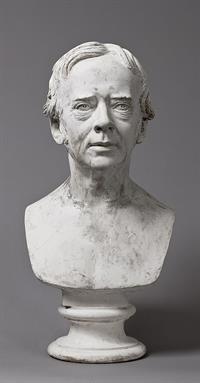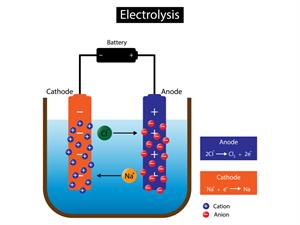
PUMPA - SMART LEARNING
எங்கள் ஆசிரியர்களுடன் 1-ஆன்-1 ஆலோசனை நேரத்தைப் பெறுங்கள். டாப்பர் ஆவதற்கு நாங்கள் பயிற்சி அளிப்போம்
Book Free DemoWe have already discussed the heating effect of electric current. When an electric current is passed in a circuit, it also produces a magnetic field around it. We will discuss an experiment to understand the magnetic effect of electric current. This experiment requires a cardboard, an electric wire, a cell, and a switch.

Magnetic effect of electric current
- The cardboard is taken from an old matchstick box.
- A small electric wire is wrapped around the cardboard.
- A tiny compass needle is placed inside the wire on the cardboard.
- The ends of the wire are connected to a cell through a switch.
- The direction pointed by the compass needle is noted.
- Now, a bar magnet is brought near the compass needle, and the switch is turned ON.
- The compass needle starts deflecting when the current passes through the circuit.
- When the switch is turned OFF, the compass needle comes back to its original position.
Inference
The compass needle is made of a tiny magnet that points to the north-south direction at rest.
When the bar magnet is kept near the needle while the switch is in the off position, there is no deflection in the needle.
Whereas when a bar magnet is brought near the compass needle when the switch is turned on, the needle gets deflected.
This deflection can also happen when the current flows through the wire. Hans Christian Oersted noticed this deflection of the compass needle when the current was passed through the wire. The wire behaves like a magnet when current is passed through it. This is known as the magnetic effect of electric current.

Hans Christian oersted
Application of magnetic effect of electric current:
- Magnetic effect of electric current has been employed in making powerful electromagnets.
- Electromagnets are also used in hospitals to remove splinters of steel or iron in the human eye.
- Electromagnets are used in many appliances that we use in our day-to-day life, such as electric bells, microphones, loudspeakers, generators, motors, cranes and telephones.
Let us know how the magnetic effect of electric current is applied in telephones.
Telephone:
A changing magnetic effect causes a thin sheet of metal to vibrate in a telephone. The thin sheet of metal is also called a diaphragm.
- The diaphragm is made to attach to a spring that is fixed to the earpiece.
- When the current flows through the wires, the soft iron bar becomes an electromagnet.
- The diaphragm becomes attracted to the electromagnet.
- When a person on the other end of the line speaks, his voice causes the current circuit to change, and it causes the diaphragm in the earpiece to vibrate, producing sound.

Telephone

Working of telephone
Chemical Effects of Electricity:
Chemical reactions occur when electricity is passed through various liquids such as sulphuric acid and hydrochloric acid. This reaction is known as the chemical effects of electricity.

Electrolysis